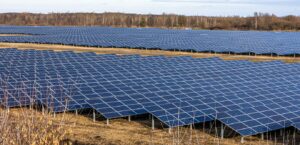Harnessing the Power of Concentrated Solar: Innovations in Solar Technology

Technical Components and Advancements in CSP
Advanced Heat Transfer Fluids and Thermal Storage
One of the critical challenges in CSP is the effective management of heat transfer fluids and thermal storage. Recent advancements include the development of advanced heat transfer fluids such as molten salts, phase change materials, and high-temperature fluids. These fluids offer higher thermal capacities, allowing for more efficient heat transfer and energy storage. Advanced Thermal storage systems, such as single and dual-tank molten salt systems, enable CSP plants to store energy for extended periods, ensuring a continuous and reliable power supply even during non-solar hours.
Hybrid Systems and Integration with Conventional Power Plants
Hybrid systems that combine CSP with other renewable energy technologies or conventional power plants have been developed to optimize the performance and reliability of CSP plants. Integrating CSP with photovoltaic (PV) systems enables the utilization of a broader solar spectrum. At the same time, the combination of CSP with natural gas or coal-fired power plants allows for more consistent power output. These hybrid systems provide a stable power supply, minimize fluctuations, and enhance the overall efficiency of the energy system.
Advanced Solar Tracking Systems
The efficiency of a CSP system depends on the precise tracking of the sun’s movement to maintain the optimal concentration of sunlight on the receiver. Advanced solar tracking systems, such as single and dual-axis trackers, have been developed to increase the accuracy and efficiency of CSP systems. These tracking systems adjust the position of mirrors or lenses throughout the day, ensuring that the maximum amount of sunlight is concentrated on the receiver, increasing energy production.
Emerging CSP Technologies
Apart from the established CSP technologies, several emerging technologies show potential for future deployment. Among these are the particle receiver technology, which employs a cloud of solid particles to absorb and transfer heat, and the supercritical carbon dioxide (sCO2) Brayton cycle, which uses sCO2 as a working fluid in a closed-loop power cycle. These technologies offer higher efficiencies, reduced water consumption, and lower operating costs, making them promising options for future CSP development.
Challenges and Opportunities in CSP Deployment
Despite CSP’s significant advancements and potential benefits, several challenges must be addressed to facilitate widespread adoption. High initial capital costs, land requirements, and water consumption are some factors limiting the deployment of CSP systems. However, ongoing research and development efforts are focused on addressing these challenges through innovative designs, materials, and operational strategies. For example, dry cooling systems can help mitigate water consumption, while developing more efficient and cost-effective components can reduce overall capital costs.
Policy and Market Support
Expanding CSP systems requires supportive policy and market mechanisms to create a favorable investment environment. Governments and international organizations can promote CSP through feed-in tariffs, renewable portfolio standards, and incentives for research and development. Additionally, establishing international collaborations for technology transfer, capacity building, and financing can accelerate the deployment of CSP in emerging markets.
CSP is a promising renewable energy technology that offers numerous benefits, including high energy density, reliability, and the potential for energy storage. As the cost of CSP continues to decline and innovations in the field lead to more efficient and reliable systems, its future appears promising. The integration of advanced heat transfer fluids, thermal storage systems, and solar tracking systems, as well as the development of hybrid systems and emerging technologies, pave the way for a more sustainable energy future. However, addressing the challenges associated with CSP deployment and establishing supportive policies and market mechanisms are crucial for realizing the full potential of this technology.